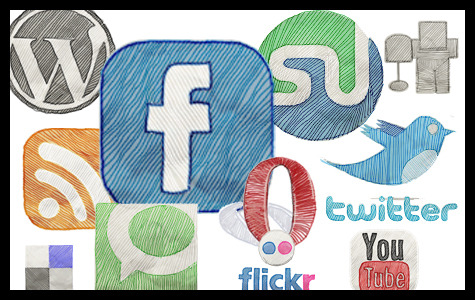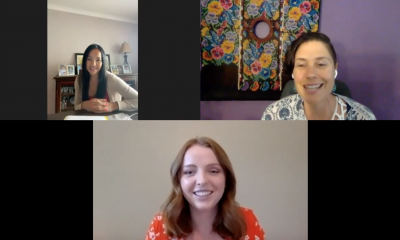When we spoke at the OGR conference in Colorado Springs, we were overwhelmed by the response and discussion generated during our session on using social media for your funeral home.
It was immediately clear that the interest in social media within the funeral industry has never been higher. Many people are still unsure how to get started using social media, and how to use it most effectively. And virtually nobody was aware of the revenue generating opportunities the web, and social media, introduce.
So over the next couple weeks I’ll be breaking down the basics of social media, the misconceptions, and the advanced techniques for driving traffic and making money.
To start, I want to address some of the most common questions we’ve been hearing, and which immediately came up during our OGR session. Here are the top 5 most common questions about social media in the funeral industry. Note: I’ll be focusing on Twitter and Facebook here, but will discuss other forms of social media, such as blogging, in follow up posts.
1. Why should I use social media? aka “Isn’t my website enough?”
This is both the most common and most basic question about social media. The prerequisite to having a successful social media strategy is understanding why you should use it in the first place. And the underlying implication of this question often is “why isn’t my website enough?”
Many people wonder why the content they’d post to Twitter or Facebook doesn’t just go straight to their website. The answer is that it all comes down to distribution. Social media’s intent is to build a brand and leverage that for distribution.
Your website itself probably doesn’t get many people checking back each day for new content. And for good reason: if I had to individually visit every website of every business I might come in contact with, most of which will only change once a year, I wouldn’t have enough minutes in the day. Nobody will visit your website consistently without a big, underlying reason!
Your social media strategy relies on consistent and significant updates that convince people to check back often. And since social media is structured in such a way that people can more easily track multiple resources, via RSS readers, Twitter clients, and Facebook feeds, they are more apt to follow your content because it’s much less of an investment than individually visiting a bunch of websites
Now, there is still a barrier in order to convince people to add your blog, Twitter feed, or Facebook page to their daily consumption patterns. The way to do it is by providing consistent value through your content. In other words, you need to commit to updating your blog, your Twitter feed, and your Facebook page with interesting and useful content on a consistent basis. It’s not easy, but it also doesn’t need to be hard. In the end, it will be well worth it.
So the short answer is this: social media should be used to gain distribution by creating consistent and valuable content in a format that is easily consumed by users. That distribution should then be monetized to open up new revenue channels (I’ll blog about this in the weeks to come!)
2. Which is better: Twitter or Facebook?
A trick question! Many folks still ask this question, typically because the thought of keeping up multiple social media sources seems intimidating and time consuming. However, if you make it a part of your daily routine, and use 3rd party tools to streamline your contributions, there’s no reason using both Twitter and Facebook needs to take away from your time spent on your core business.
Instead of just saying “both”, let’s at least try to understand the differences between what Twitter and Facebook will provide your funeral home.
Facebook is the “original” social network. While others came before it, Facebook was the first social network to really stick, and hit the mainstream audience. Your social media strategy on Facebook will differ slightly from how you might personally use the social networking site. With your personal profile, you connect with your friends on the site and typically only your friends can see your profile. For your funeral home, however, you’ll create a Facebook “Page”, which is targeted towards businesses. Anyone on Facebook can see your page, which is also viewable to the public and indexed by Google. Facebook users also have an option to “Like” your page, which is the equivalent to becoming a fan. Those users will receive any updates you post to your page (such as obituary notices) within their news feed the next time they log in to Facebook
Twitter is all about fast and frequent updates. Tips, thoughts, opinions, links and promotions are “tweeted” quickly – often multiple times per day. On Twitter, you get a list of tweets from the people you choose to follow. Likewise, the people who follow you receive your tweets. Thus, it’s beneficial to generate a following within the funeral industry and to leverage Twitter to build your brand by tweeting relevant links, local news, or area obituaries.
The demographics of Facebook and Twitter users are different as well. Facebook trends towards a younger demographic, while Twitter is skewed towards a slightly older (not many teens, at least) and business-oriented audience for your content.
3. What should I post about?
The answer of course is “it depends.” But that’s not real helpful, so I’ll expand a bit!
On Facebook, you should primarily post obituary notices and relevant news related to your funeral home or the death industry in your area.
Twitter is a little more complicated. There is a different expectation among folks on Twitter, and there is a greater appetite for faster and more frequent updates. You’ll want to be careful to strike the right balance between fast and frequent tweets, yet keeping them relevant and respectful. Remember, you are the voice of your company!
The litmus test for whether you should tweet something is to ask yourself: “Is this tweet industry specific and does it add value to people interested in my funeral home or the death care industry?”
Specifically, some types of content that fit that criteria are:
- Funeral related links
- Funeral or death care tips
- Obituaries
- Promotions or events
- Relevant news in your area
What should you avoid posting to Facebook or Twitter?
- What you ate for breakfast
- Politics
- Polarizing opinions that may reflect poorly on your company
- Anything not related to your business or industry
You can have multiple Twitter accounts, one for your personal use and one for your business use, so keep your personal stuff off your business account!
4. What about privacy?
It’s important to remember that anything you post to Twitter or Facebook will live in eternity as soon as you hit “submit.” Even if you try to delete it moments later, the information will still be found in cached search results, people’s Twitter clients, and various repositories on the internet. So be sure to keep your content relevant, on topic, and safe!
Also you should keep in mind the audience. On Facebook, if you post to a Facebook Page, it will be public to anyone on the internet. Facebook pages are not restricted to just friends, like personal Facebook profiles are. Anything you post will be viewable by anyone else.
Likewise, your Twitter account will be viewable by anyone on the web, even though it’s only pushed to the people who follow you. For instance, you can see our tweets here, even if you aren’t following us on Twitter (even though you should be!)
While it’s possible to restrict the privacy of your Twitter account, that kind of defeats the purpose of using your business account for spreading the word and obtaining distribution!
5. How do I build a Twitter following?
Your social media strategy isn’t much good if nobody is following you. But how do you get people to follow you when you first start out?
The keys are to consistently post good information within your industry. If you do that, you will gradually gain a following. But there are some other ways to kick start the process.
Promote your accounts. Our Twitter account is at http://twitter.com/funeralinnovate. Be sure to promote your accounts in your email footer, on your business cards, verbally to people you meet, and in your presentations. Make sure people know where to find you on the web!
Follow other people. On Twitter, if you follow other people and businesses, many times they will follow you back.
Post your account on your website. Folks who visit your site are probably somewhat interested in your business so are likely to follow your account if you show them the way.
Participate in conversations. If you find conversations occurring around a relevant topic or news story, chime in with your opinion or retweet other people’s tweets. This is a good way to show up within popular threads, which in turn exposes you to new followers.
Add yourself to directories. There are directories where you can list your Twitter account based on industry keywords. One prominent directory is called WeFollow.
Patience and consistency. Keep posting good content, do it consistently, and follow the practices above and the word will spread over time. That’s the power of social media!
Summary
I’m just scratching the surface of these questions, and there are of course hundreds of other good questions that I haven’t addressed. Over the coming weeks I’ll reveal additional ways of leveraging social media to increase your website and obituary distribution, and ultimately how to use that traffic to make real revenue. So keep checking back to learn more!


